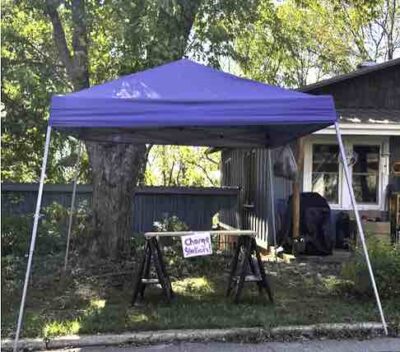
Asheville Awaits Action From Duke Energy
As residents of Asheville, NC, queue to buy water, and stalk the streets of this artsy town looking for somewhere to charge their cell-phones, their entire view of the mountain enclave has been turned on its head. A week after Hurricane Helene, nearly half the population is still waiting for its power to be turned back on, according to off-grid analysis of a range of press releases, social media reports and industry data.
Thousands moved here over the past 10 years, precisely to reduce the risks of extreme weather, but many of the newcomers chose not to take out flood insurance because premiums were high, and are now facing devastating losses. They accepted assurances from Duke Energy, which supplies 95% of the power in the region, that all possible was being done to improve resilience and decarbonise the energy supply.
But current reports indicate nearly half Asheville’s 250,000 population is still without power and water. Across the Carolinas, where “major portions of the power grid… were simply wiped away, ”a million customers remain in the dark, according to PowerOutage.us.
Duke Energy has faced criticism in the past regarding its response to outages, particularly during severe weather events. Anecdotal accounts often cite concerns over reliability, particularly when comparing service restoration times to national standards.
August 24, 2024: A severe thunderstorm swept through Asheville, resulting in localized outages as high winds knocked down power lines (Citizen Times).
July 14, 2024: A summer storm led to multiple reports of outages across the city as lightning struck power infrastructure, impacting several neighborhoods (Citizen Times).
June 1, 2024: Duke Energy reported outages affecting thousands due to a strong weather system that produced heavy rain and gusty winds (Citizen Times).
May 15, 2024: A significant windstorm knocked out power for many residents, with gusts causing tree falls and power line damage across Asheville(Citizen Times).
I live in Asheville. Where is @DukeEnergy. They said they needed a day or two to assess the situation. its been almost a week and even in areas that were not affected by the flooding where Duke could be working on the the power, they are absent. Is Asheville another Hawaii?
— 🇺🇸 TakeBackAmerica444 🇺🇸 (@dark_to_light44) October 3, 2024
In Buncombe County where Helene hit hardest, which includes Asheville, at least 95,000 customers remain without power. In neighbouring Henderson County, 52,000 customers are still without power. Rutherford and McDowell counties still report about 23,000 and 19,000 outages, respectively.
Duke Energy has announced a $1m charitable donation to the community, but made no prediction on when the power will be back on.…









